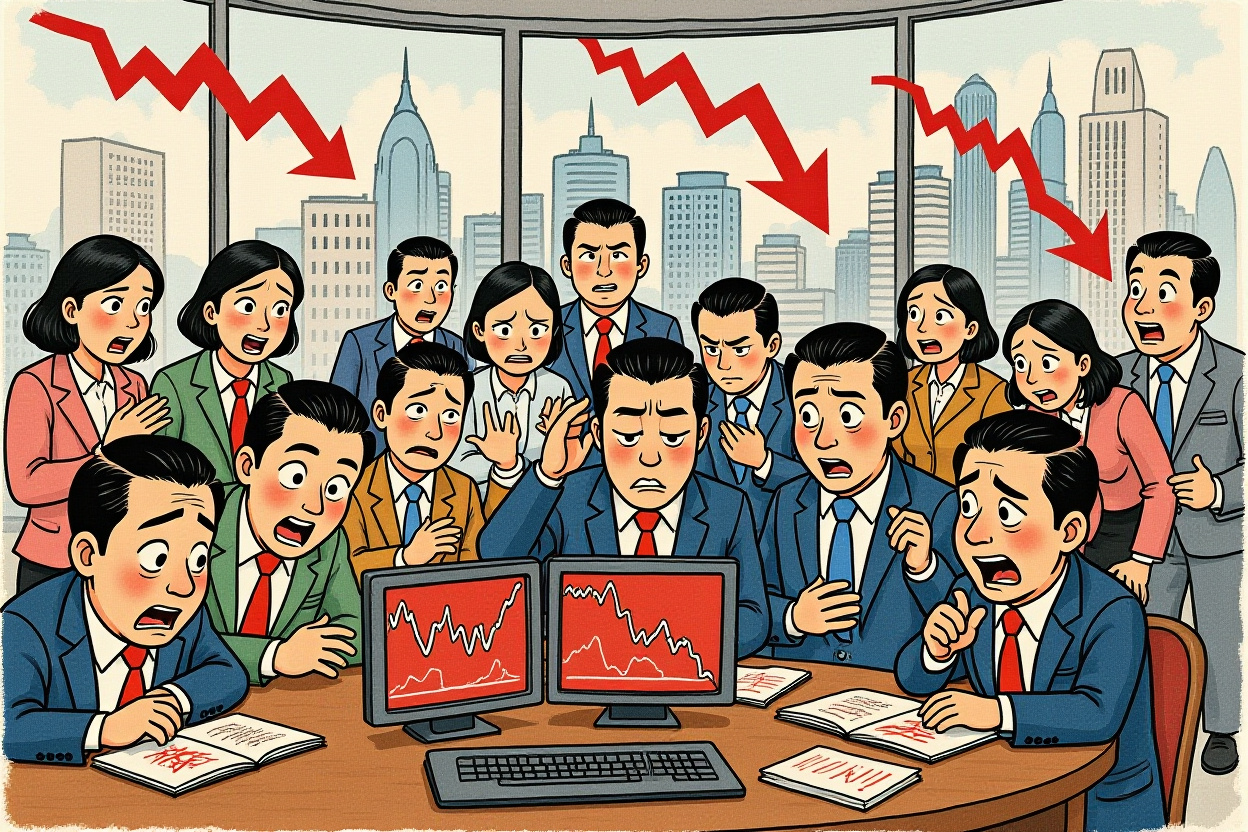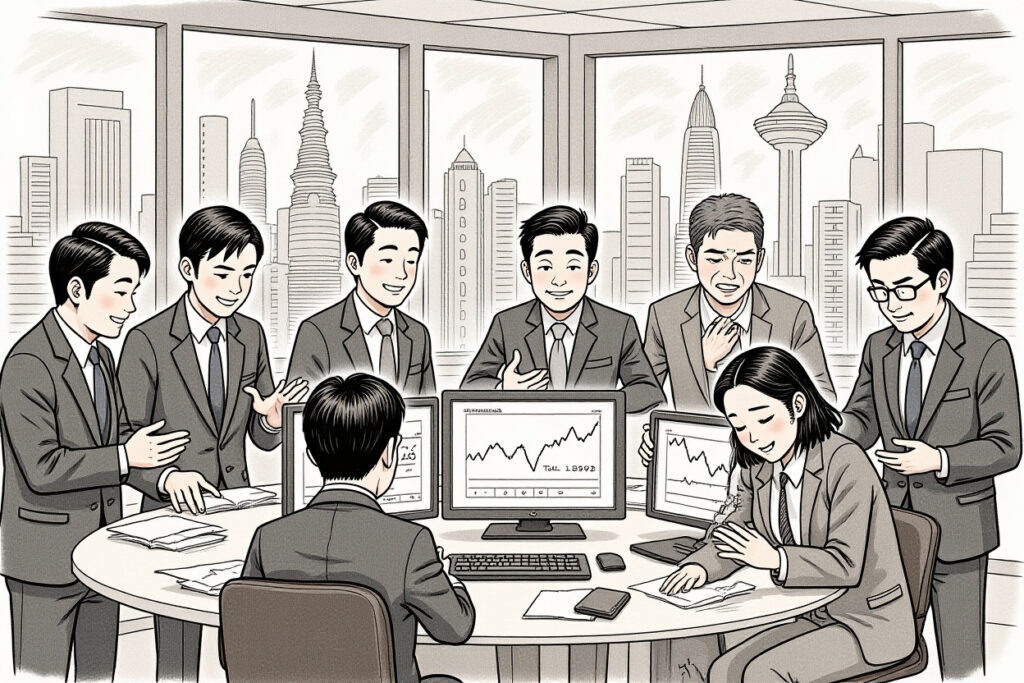Executive Summary
- Shandong Hi-Speed Holdings (山高控股) experienced a catastrophic 76% intraday plunge on September 19, 2025, following a Hong Kong Securities and Futures Commission (SFC) warning on concentrated ownership.
- Domestic investors, including Agricultural Bank of China International (农银国际) and southbound Stock Connect funds, suffered massive losses exceeding RMB 2.2 billion in attempted bottom-fishing.
- The company’s repeated pivots between financial leasing,新能源 (new energy), and AI/computing themes—coupled with highly concentrated shareholding—created ideal conditions for pump-and-dump schemes.
- Despite its state-backed pedigree under Shandong Hi-Speed Group (山东高速集团), the stock exhibits characteristics reminiscent of “千股” (pump-and-dump) plays with frequent capital manipulations.
- Immediate technical support remains weak with high probability of continued volatility, suggesting extreme caution for institutional and retail investors alike.
The Perfect Storm: Anatomy of a 76% Single-Day Collapse
September 19, 2025, marked one of the most dramatic single-day crashes in recent Hong Kong market history as Shandong Hi-Speed Holdings (山高控股) opened sharply lower and never recovered, ultimately closing down 76%. For investors who entered at the open, a HKD 140,000 position evaporated to barely HKD 33,600 within hours. Social media platforms flooded with loss statements from retail traders, including one individual reporting nearly HKD 500,000 in losses from attempted bottom-fishing.
Regulatory Trigger: The SFC Warning
The immediate catalyst came from the Hong Kong Securities and Futures Commission (香港证监会) disclosure highlighting extreme ownership concentration. The regulator noted that controlling shareholders held 43.37%, Harvest Fund (嘉实基金) held 25.09%, and twenty other shareholders held 24%, leaving merely 7.54%—or 454 million shares—in genuine public float. Even before the crash, the free-float market capitalization stood at just HKD 5 billion, making it susceptible to manipulation by relatively small capital flows.
Pattern of Manipulation: Classic Pump-and-Dump
Chart analysis reveals textbook manipulation: Shandong Hi-Speed Holdings rallied 200% over three months from mid-May 2025, peaked on September 16 with a 24% single-day drop, then collapsed completely on September 19. This trajectory matches classic “杀猪盘” (pump-and-dump) patterns where operators attract retail momentum buyers before dumping shares en masse.
Business Model or Story Stock? The Fundamental Dilemma
Beneath the volatility lies a deeper question about Shandong Hi-Speed Holdings’ actual business value. Originally a financial leasing operation, the company pivoted aggressively into trendy sectors—first acquiring 43.45% of Beijing Enterprises Clean Energy (北控清洁能源) in May 2022 to enter renewable energy, then investing in Century Internet (世纪互联) to capitalize on the AI/computing boom in 2023.
Earnings Illusion: The 506% Profit Increase Mystery
The company’s interim report on August 29, 2025, showed a headline net profit increase of 506% to RMB 476 million. However, closer examination revealed revenue actually declined year-over-year, while the actual profit growth—after adjustments—was 113.82%. This discrepancy between reported numbers and operational reality heightened skepticism about sustainability.
Asset Quality and Liquidity Concerns
Despite reporting RMB 4.576 billion in cash and RMB 6.4 billion in fair-value financial assets, Shandong Hi-Speed Holdings faces liquidity pressure. Short-term borrowings—including RMB 1.2 billion in bank loans due within one year—exceed immediately realizable assets, creating refinancing risks amid tightening credit conditions.
Who Really Caused the Crash? Trading Data Analysis
Futu (富途) trading data reveals nuanced institutional behavior: Agricultural Bank of China International (农银国际) aggressively bought nearly 100 million shares on September 16 at approximately HKD 14 per share—investing roughly HKD 1.4 billion—only to see those positions lose over 70% within days. Similarly, southbound Stock Connect (港股通) inflows totaled RMB 2.24 billion on the crash day, much of it likely trapped at elevated prices.
The Foreign Seller Narrative
While HSBC (汇丰), Citigroup (花旗), and Standard Chartered (渣打) appeared as net sellers over 60 days, they were not the primary force on September 19. Instead, local brokers including Fu Zhong (富中) dumped 12 million shares after having accumulated 279 million shares since May 15—classic distribution behavior.
Investment Implications and Regulatory Outlook
This incident underscores persistent vulnerabilities in Hong Kong’s market structure, particularly for state-backed entities with complex ownership and evolving business models. The Securities and Futures Commission (SFC) has increasingly targeted concentrated holdings, and this case may accelerate regulatory reforms.
Lessons for Cross-Border Investors
International investors accessing Chinese equities via Hong Kong must recognize that state backing does not immunize against governance risks. Scrutiny of ownership concentration, debt maturity profiles, and business model coherence remains essential—especially for companies frequently pivoting between sectors.
Navigating Post-Crash Realities
Shandong Hi-Speed Holdings now trades at 40x earnings despite a 76% decline, suggesting neither cheap valuation nor strong confidence in earnings quality. Historical patterns indicate high probability of further volatility, including potential share consolidations or capital raising activities that dilute existing holders.
For institutional investors, this event reinforces the need for enhanced due diligence on Hong Kong-listed small-mid caps—especially those with recent theme pivots, concentrated ownership, or complex intercorporate relationships. Retail investors should avoid attempting to catch falling knives in such names, as liquidity can vanish instantly during crises.
Moving forward, regulators may impose stricter float requirements or disclosure rules for companies with controlling shareholders exceeding 75%. Investors should monitor SFC announcements and adjust portfolios toward companies with transparent governance, sustainable cash flows, and credible long-term strategies beyond thematic storytelling.




